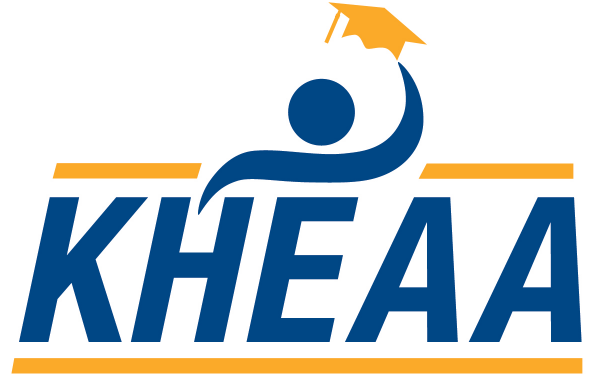FAQs
We're glad
you asked.
Our most frequently asked questions, answered.
KY Saves 529 is a Section 529 plan offered by the Commonwealth of Kentucky. Ascensus College Savings Recordkeeping Services, LLC serves as the Program Manager. The Program Manager and its affiliates have overall responsibility for the day-to-day operations including investment advisory, recordkeeping and administrative services. KY Saves 529 is designed to help individuals and families save for college in a tax-advantaged way and offers valuable advantages including tax-deferred growth, generous contribution limits, attractive investment options, and professional investment management.
When you open a KY Saves 529 account, you choose to invest in one or more of the available investment options, including seven Year of Enrollment Options, four Asset Allocation options and the Capital Preservation Option, based upon your investing preferences and risk tolerance. All of the contributions made to your account grow tax-deferred and the withdrawals are free from federal and Kentucky state income taxes if used for qualified expenses.1
The easiest way is to enroll online. It only takes about 15 minutes. If you prefer to enroll by mail, call to request an enrollment form. You can open more than one account but each must be for a different beneficiary.
You can get started with no minimum initial contribution. You can also establish recurring contributions from your bank account for any amount you feel comfortable with.2 More than one person can contribute to the same account until total market value reaches $450,000. After that, the account may continue to grow higher through investment earnings only.
KY Saves 529 has no enrollment fees, commissions, loads, or sales charges. The total annual asset-based fee varies from 0.20% to 0.85%, depending on the Investment Option you choose.
To be an Account Owner, you must be a U.S. citizen, resident alien, or an entity that is organized in the U.S. be at least 18 or older, and have a Social Security number or tax identification number and a permanent U.S. street address. Parents, grandparents, other family, and friends, regardless of their income level, can open an account for anyone they choose.
Any number of people can contribute to the same KY Saves 529 account, but total assets cannot exceed $450,000 for all accounts for the same beneficiary in 529 plans sponsored by the Commonwealth of Kentucky.
Any person of any age (with a Social Security number) can be named as the beneficiary of a KY Saves 529 account. As account owner, you can select a child, adult or even yourself as beneficiary. If a beneficiary decides not to attend college, you can name another beneficiary who is a qualified member of the same family as the original beneficiary. Please see the Program Description for more information on who qualifies.
Yes. As account owner or custodian you choose the investment options in which you invest, as well as the withdrawal of the funds.
Yes. You can change the allocation of your future contributions at any time. Current federal law permits you to move the assets in your KY Saves 529 account to a different mix of investment options twice per calendar year.
Yes. You can transfer your account to a member of the family of the beneficiary without incurring federal income tax or penalties.3
No. The beneficiary must have a Social Security number or taxpayer identification number, but you may name yourself as beneficiary and change the beneficiary to that child later on.
KY Saves 529 permits a custodian for a minor under the Uniform Gifts to Minors Act or Uniform Transfers to Minors Act (UGMA/UTMA) to apply funds previously held in an UGMA/UTMA account to open an account in the plan and to fund additional contributions to such an account, subject to the laws of the state under which the UGMA/UTMA account was established. Such a transfer of funds is generally a taxable event and you should consult with a tax advisor before transferring UGMA/UTMA assets to a 529 plan.
Yes. You may perform a federal income tax-free rollover from another 529 plan into your KY Saves 529 account for the same beneficiary once every 12 months. You may also perform a federal income tax-free rollover from another 529 plan into your KY Saves 529 account at any time when you change the beneficiary to a qualifying family member of the current beneficiary.
- Electronic funds transfer from your checking or savings account
- Recurring contributions with scheduled contributions in set amounts from your checking or savings account2
- Payroll direct deposit2
- Check
- Rollover from another 529 plan
- Rollover from an Education Savings Account or a qualified Series EE or Series I U.S. Savings Bond
- Transfer from an UGMA/UTMA account
- Ugift®
- Upromise®
Taxes
Earnings grow tax deferred and are free from federal income tax when used for qualified expenses.1 Qualified expenses include tuition, mandatory fees, books, supplies, computers, and equipment required for enrollment or attendance; certain room and board costs during any academic period the beneficiary is enrolled at least half-time; and certain expenses for a special-needs student. Qualified expenses also include tuition in connection with enrollment or attendance at an elementary or secondary public, private, or religious school.
Individuals can contribute up to $19,000 ($38,000 for married couples) annually per beneficiary without assuming any gift-tax consequences. You can also contribute up to $95,000 per beneficiary in a single year ($190,000 for married couples) and take advantage of five years' worth of tax-free gifts at one time.4 (Contributions are considered completed gifts and are removed from your estate, but you, as the account owner, retain control.) Upon the death of the account owner, money remaining in the account will not be included in the account owner's estate for federal estate tax purposes. For more information, consult your tax advisor or estate-planning attorney.
Using the assets of your KY Saves 529 account.
The money in your KY Saves 529 account can be used for any purpose. However, to qualify for federal tax-free withdrawals and avoid penalties,1 the money must be used toward qualified expenses.
Qualified expenses can include higher education tuition, computers, mandatory fees, books, supplies, and equipment required for enrollment or attendance; certain room and board costs during any academic period the beneficiary is enrolled at least half-time; toolkits for apprenticeship or cosmetology school; and certain expenses for a special-needs student. Qualified expenses also include K-12 tuition expenses (up to $10,000 per student per year across all 529 plans for such student) in connection with enrollment or attendance at an elementary or secondary public, private, or religious school.
Yes. Repayment of student loans is considered a qualified expense. Principal or interest on any qualified education loan of the designated beneficiary or a sibling of the designated beneficiary, up to a lifetime limit of $10,000 per individual. If you make an education loan repayment from your Account, you may not also take a federal income tax deduction for any interest included in that education loan repayment.
No. You can use the assets in your account toward the costs of nearly any public or private, 2-year or 4-year college nationwide, as long as the student is enrolled in a U.S.-accredited college, university, graduate school, apprenticeship program or technical school that is eligible to participate in U.S. Department of Education student financial aid programs. In fact, many U.S. colleges and universities now have campuses or locations outside of the country, where money from your KY Saves 529 account can be used. Elementary or secondary public, private or religious schools are also included.
You have three options:
- 1. Stay invested.
You can leave the money in the account in case the beneficiary decides to attend school later. There is no age limit for using the money. - 2. Change the beneficiary.
You can change the beneficiary on your account at any time provided that the new beneficiary is an eligible Member of the Family of the former beneficiary.3 - 3. Withdraw the money for other uses.
The earnings portion of a withdrawal not used for a beneficiary's qualified expenses is subject to federal and state income taxes and may be subject to a 10% federal penalty tax. (For exceptions to this penalty, please see the Program Description.)
Additionally, any accumulated earnings that are withdrawn from your account must also be reported on the recipient's income tax return for the year in which they are withdrawn. Contact your tax advisor to determine how to report a non-qualified withdrawal.
KY Saves 529 accounts are not included when determining Kentucky need-based aid for a beneficiary. Please see the Program Description for details.
529 plan assets are counted at different rates for the Expected Family Contribution (EFC) in the FAFSA formula. Federal guidelines are as follows:
- If the student is a dependent, a 529 plan account is considered as the parent's asset (if the account owner is the parent or the dependent student). As a result, it will generally be counted at a rate of only 3-6% of its value for the EFC.
- If the student is not a dependent and is the account owner, the 529 plan account is treated as the student's asset and is generally factored into the EFC at the higher rate of 20%.
- In other cases, such as a student who is neither a dependent nor the account owner, the account does not count as an asset for federal financial aid purposes. However, a student may have to report distributions received from the account as income for these purposes.
- Beginning with FAFSA applications for the 2024-2025 academic year, as part of the Consolidated Appropriations Act, distributions from a non-parent-owned 529 account will no longer need to be reported as the student’s taxable income on the FAFSA.
KY Saves 529 accounts are not included when determining Kentucky need-based aid for a beneficiary. Please see the Program Description for details.
NOTE: Financial aid programs offered by educational institutions and other non-federal sources may have their own guidelines for the treatment of 529 plan accounts. For complete information about financial aid eligibility, you should consult with a financial aid professional and/or the state or educational institution offering a particular financial aid program, since rules and regulations often change.
Effective January 1, 2024, 529 account owners will be able to rollover savings from their 529 plan account into a Roth IRA without incurring any federal income tax or penalty. The Roth IRA must belong to the same beneficiary, and the lifetime rollover limit is $35,000. To be eligible, the 529 account must have been open for at least 15 years and the rollover amount must have been in the 529 account for 5 years.
529 to Roth IRA rollovers will also count toward annual Roth IRA contribution limits, but Roth IRA income limits do not apply for this type of contribution. For more information, please read the Program Description.
Mr. Wilcox is a registered representative of Ascensus Broker Dealer Services LLC, 877-529-2980, 95 Wells Ave, Newton, MA 02459 (member FINRA/SIPC) and is not employed by the Commonwealth of Kentucky.
1Earnings on non-qualified withdrawals may be subject to federal income tax and a 10% federal penalty tax, as well as state and local income taxes. Tax and other benefits are contingent on meeting other requirements and certain withdrawals are subject to federal, state, and local taxes. Since different states have different tax provisions, if you or your beneficiary, as applicable, are not a Kentucky taxpayer, the state(s) where you pay income tax may differ in its state income tax treatment of K-12 tuition expenses. You should consult your own state’s tax laws or your tax advisor for more information on your state’s taxation of withdrawals for K-12 tuition expenses.
2An investment plan of regular investment cannot assure a profit or protect against a loss in a declining market.
3Section 529 defines a family member as: a son, daughter, stepson or stepdaughter, or a descendant of any such person; a brother, sister, stepbrother, or stepsister; the father or mother, or an ancestor of either; a stepfather or stepmother; a son or daughter of a brother or sister; a brother or sister of the father or mother; a son-in-law, daughter-in-law, father-in-law, mother-in-law, brother-in-law, or sister-in-law; the spouse of the beneficiary or the spouse of any individual described above; or a first cousin of the beneficiary. Gift or generation-skipping transfer taxes may apply. Please consult with your tax advisor for further information.
4In the event the donor does not survive the five-year period, a pro-rated amount will revert to the donor's taxable estate.







